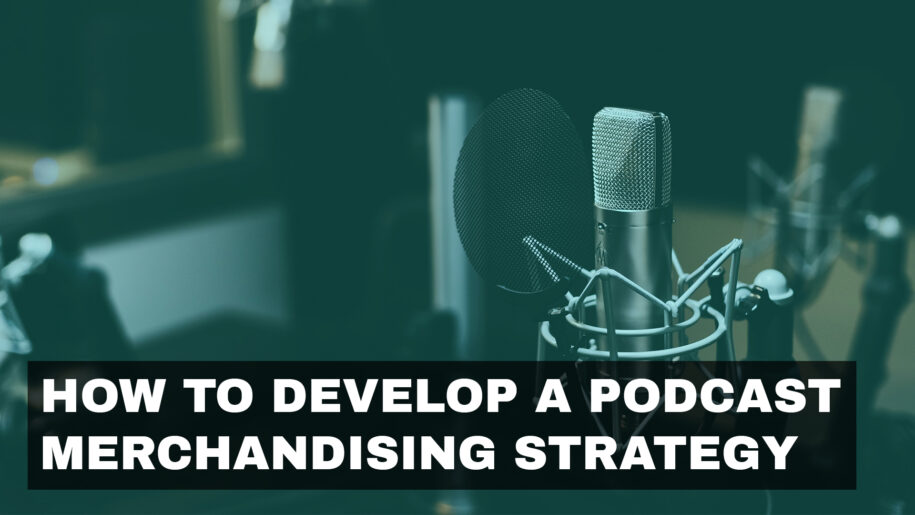Merchandising is an excellent way for podcasters to engage with their audience, promote their brand, and generate additional revenue. Developing a successful podcast merchandising strategy involves understanding your audience, creating appealing products, and effectively marketing them. Here’s a step-by-step guide to help you develop a robust podcast merchandising strategy.
1. Understand Your Audience
Know Your Demographics
Understand the demographics of your podcast listeners, including age, gender, location, and interests. This information will help you design products that resonate with your audience.
Identify Listener Preferences
Engage with your audience through surveys, social media, and direct feedback to learn about their preferences. Knowing what types of merchandise they are interested in will guide your product selection.
2. Define Your Brand
Establish Brand Identity
Clearly define your podcast’s brand identity, including its logo, color scheme, tagline, and overall aesthetic. Consistency in branding across your merchandise helps strengthen brand recognition and loyalty.
Create Unique Designs
Develop unique and appealing designs that reflect your podcast’s theme and personality. Collaborate with graphic designers if necessary to create high-quality visuals for your merchandise.
3. Choose the Right Products
Start with Popular Items
Begin with merchandise that is popular and has a broad appeal. Common items include t-shirts, hoodies, mugs, stickers, and tote bags. These products are generally cost-effective and have a wide appeal.
Expand Based on Feedback
As your merchandise strategy evolves, expand your offerings based on listener feedback and sales data. Consider introducing new items like hats, phone cases, notebooks, or even limited-edition collectibles.
4. Find Reliable Suppliers
Print-on-Demand Services
Consider using print-on-demand services like Printful, Teespring, or Redbubble. These platforms handle printing, inventory, and shipping, reducing your upfront costs and logistical challenges.
Quality and Pricing
Choose suppliers that offer high-quality products at reasonable prices. Ensure that the merchandise aligns with your brand’s quality standards and offers good value for your audience.
5. Set Up an Online Store
Choose a Platform
Select an e-commerce platform to host your online store. Popular options include Shopify, WooCommerce, and Etsy. These platforms offer user-friendly interfaces and customizable templates.
Integrate with Your Website
If you have a website for your podcast, integrate your online store with it. This provides a seamless shopping experience for your listeners and drives more traffic to your site.
User Experience
Ensure your online store offers a smooth and intuitive user experience. Easy navigation, clear product descriptions, and a straightforward checkout process are essential for driving sales.
6. Promote Your Merchandise
Utilize Social Media
Promote your merchandise on social media platforms like Instagram, Twitter, and Facebook. Share high-quality images and engaging content that showcases your products and encourages listeners to make a purchase.
Mention on Podcast Episodes
Regularly mention your merchandise in your podcast episodes. Highlight new products, special offers, and limited-time promotions to create excitement and urgency.
Collaborate with Influencers
Partner with influencers or other podcasters to promote your merchandise. Their endorsements can help you reach new audiences and boost your credibility.
Offer Incentives
Offer discounts, bundle deals, or exclusive merchandise to incentivize purchases. Special promotions can drive initial sales and encourage repeat customers.
7. Track Performance and Gather Feedback
Monitor Sales Data
Regularly track sales data to understand which products are performing well and which ones need improvement. Use this data to make informed decisions about inventory and product offerings.
Collect Customer Feedback
Encourage customers to leave reviews and provide feedback on your merchandise. Positive reviews can boost credibility, while constructive feedback helps you improve your products and services.
Adjust Strategies
Be flexible and willing to adjust your merchandising strategy based on sales performance and customer feedback. Continuously refine your approach to meet the evolving preferences of your audience.
Developing a successful podcast merchandising strategy involves a deep understanding of your audience, a clear brand identity, and strategic marketing efforts. By selecting the right products, partnering with reliable suppliers, and effectively promoting your merchandise, you can create a profitable and engaging extension of your podcast brand. Embrace this opportunity to connect with your audience in a new way and grow your podcast’s reach and revenue.


